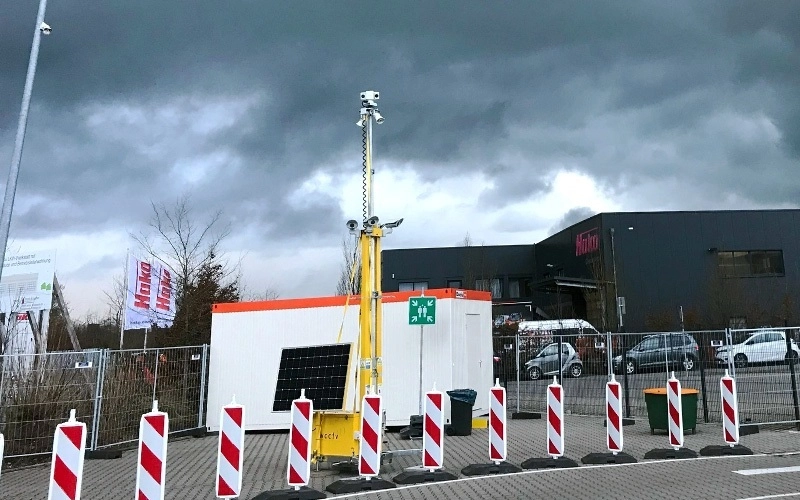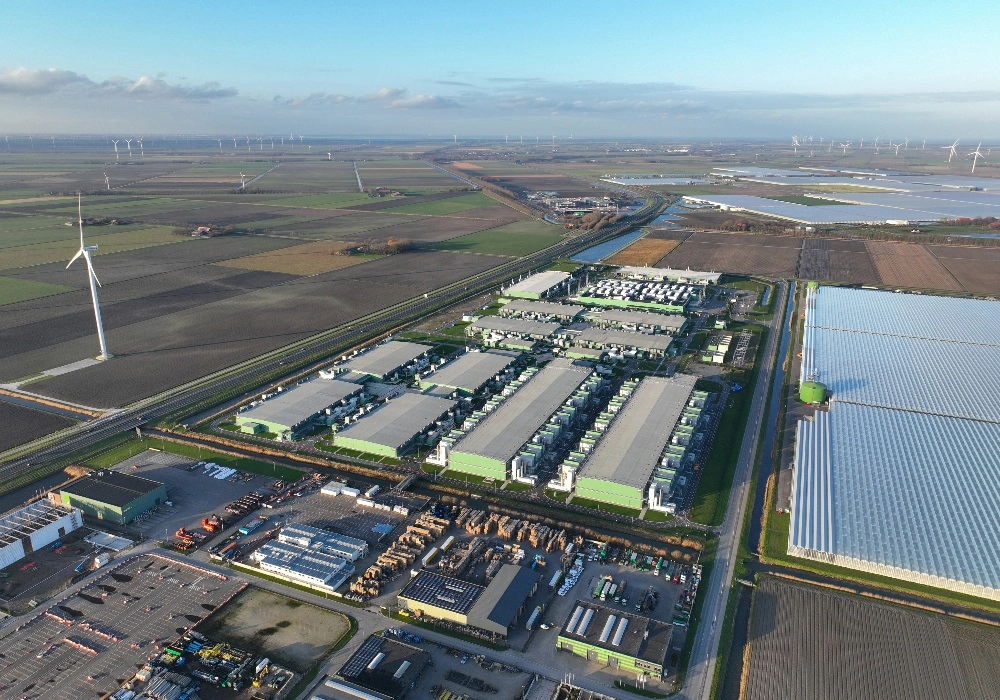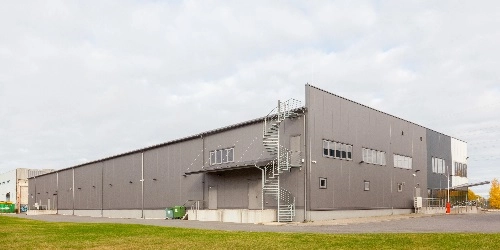Data centres face persistent security threats, both physically and virtually, due to the amount of data they hold.
Physical security measures are essential for any data centre security strategy.
What are the Different Ways you Can Physically Secure a Data Centre?
Let's look at different ways you can improve data centre security:
Surveillance Systems
Access Control Systems
- Single Entry & Exit Points
Perimeter Security
-
Fencing
-
Lighting
Security Guards
-
Manned Patrol
-
K9 Patrol
Secure Racks and Cabinets
It's important to note that combining these measures is typically the most effective approach to physically securing a data centre.
Regular assessments, audits, and updates to security procedures are also essential for maintaining a high level of protection.

What is Physical Security at Data Centres?
Physical Security at Data Centres refers to techniques to secure the perimeter and internal assets and data.
To prevent physical attacks on your data centre, you can implement measures like temporary CCTV Cameras and Towers, a single access point and manned security with K9 dogs.
CCTV Cameras & Towers for Data Centres
Security Cameras and Towers are extremely important for securing your Data Centre as they are an ideal target for criminals and organised gangs that want to steal data, cables, metal and even physical assets like servers.
Cameras are a great way to visually deter any thief, especially when combined with a CCTV Tower and a Remote Monitoring Service.
Our 4G Infrared Mini Dome Cameras are perfect for Data Centres as these work over mobile communication and do not need to be connected to the local internet.
Using this camera with one of our Redeployable Solar Fuel Cell CCTV Towers can provide up to 20 weeks of fully autonomous power, meaning that even in the most remote locations, your assets are safe and protected 24 hours a day.
Pairing a CCTV Tower with a Remote Monitoring Service is the perfect solution for any Data Centre. Once an intruder is detected, an alert is immediately sent to the Remote Monitoring Station, where specially trained individuals will verify the threat.
An alarm or live voice challenge can be issued through a speaker attached to the tower. This is usually enough to deter any intruders, but if they continue, then they will contact on-site security or dispatch the police to the site.
You will receive a detailed breakdown of what has happened and the footage, which helps with convictions.

How do I Know Police will Attend my Site When an Intruder is Detected?
We only use NSI Gold Accredited Remote Monitoring Stations; this means they have been trained to the highest level to detect intruders and inform local police that they need to attend the site.
Police understand that this information has come from a NSI Gold accredited source which can be treated as a priority.
Access Control Systems
Everyone who enters the Data Centre, whether employees, vendors or visitors, should be pre-vetted before they access the building. This typically includes background checks on individuals.
If you use keycards or fobs, then different levels of access should be given to each employee or individual, depending on their role or visit.
Metal detectors and stringent checks should be in place at the entrance; having one entrance access point can also help minimise risks.
This also applies to vendors and deliveries to the site. Having one location for vans and lorries to enter and exit controlled by a retractable gate is usually the norm.
Some Data Centres use ANPR cameras, which read number plates and can identify when an unauthorised vehicle has entered the site.
Perimeter Security
Perimeter security sounds very obvious, but a few techniques can benefit a Data Centre, like having a buffer zone of around 100ft with crash-proof barriers and ensuring you have ample lighting and fencing.
LED Flood Lights are a great way to illuminate large unused spaces of land where intruders will try and access for ease of access to the site.
Security Guards and K9 Dog Handlers
Manned security guards are another way you can secure your Data Centre. They usually have a routine or path to follow, along with certain security checks and check-ins within the control room.
Some Data Centres use K9 Dog handlers to patrol the grounds as they provide extra benefits like tracking intruders if they breach the perimeter.
Bear in mind that manned security guards and dog handlers can become expensive for 24/7 security, as well as factors like tiredness, fatigue and lack of concentration leading to mistakes spotting potential risks.
Find out how you can save up to 88% with CCTV Cameras and Remote Monitoring
Secure Racks and Cabinets for Data Centres
Ensuring that all your server racks and cabinets are in secure rooms with keycard entry points on the door can go a long way in protecting your most valuable assets.
Having locks on each server cabinet is another level of security that should be considered.
This should help reduce the likelihood of any unauthorised access to these rooms and cabinets.
What is Remote Monitoring, and how does it work for Data Centres?
Remote CCTV monitoring is when a professional team actively monitor one or more CCTV cameras in a centralised control centre where they deter criminals through different methods such as:
- Sounding an alarm
- Voice-down challenging, physically talking to the trespassers
- Contacting on-site security guards or dispatching local police
These companies usually have a set of guidelines or rules to follow which are agreed with the person in charge of security for the data centre.

There are usually six stages that companies will use when an intruder has been confirmed on your site.
-
Intruder Spotted
-
Monitoring Station Track and Verify
-
Record Evidence Footage
-
Live Audio Warning through Speakers
-
Police or Security Personnel Dispatched to Site
-
Evidence Provided
These steps can be enhanced depending on your security protocols or requirements. Remember, this is a brief outline of the process of a remote monitoring service.
If you want to learn more about How CCTV Monitoring works for Data Centres, contact an expert member of our team.



